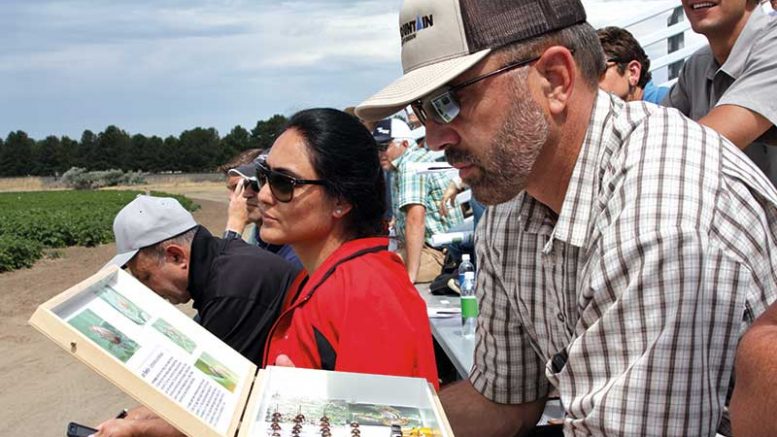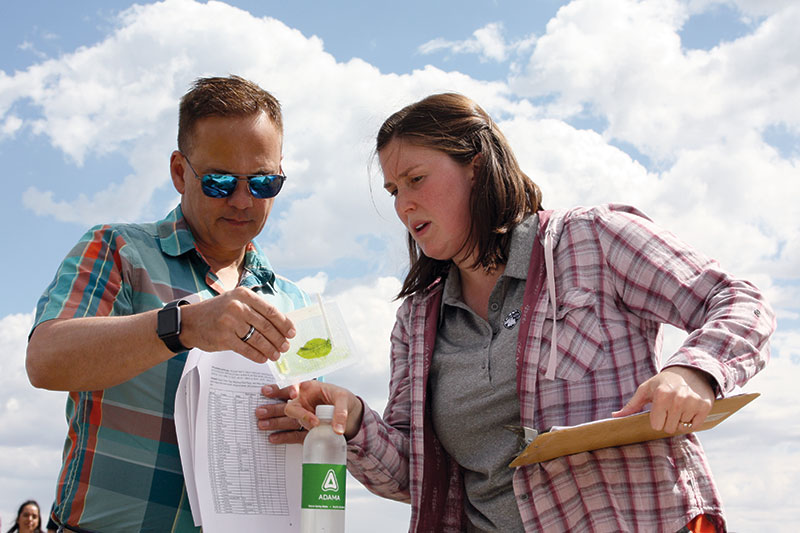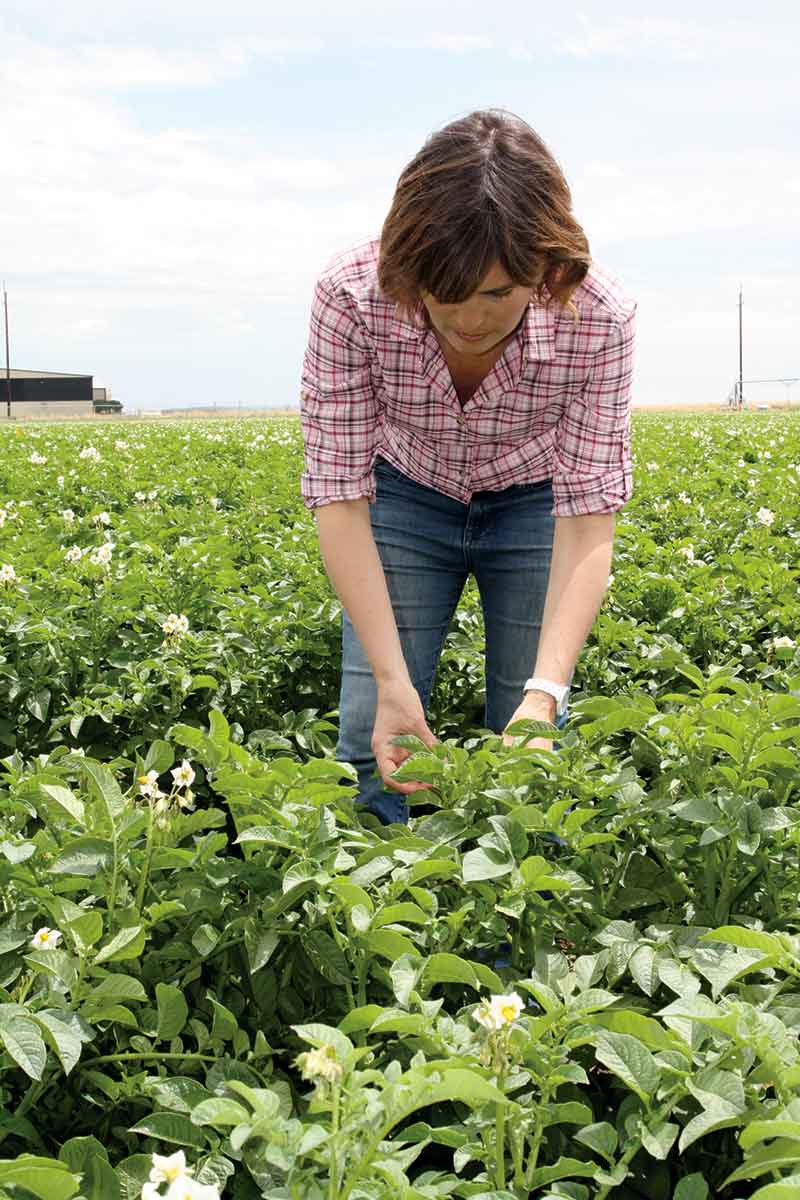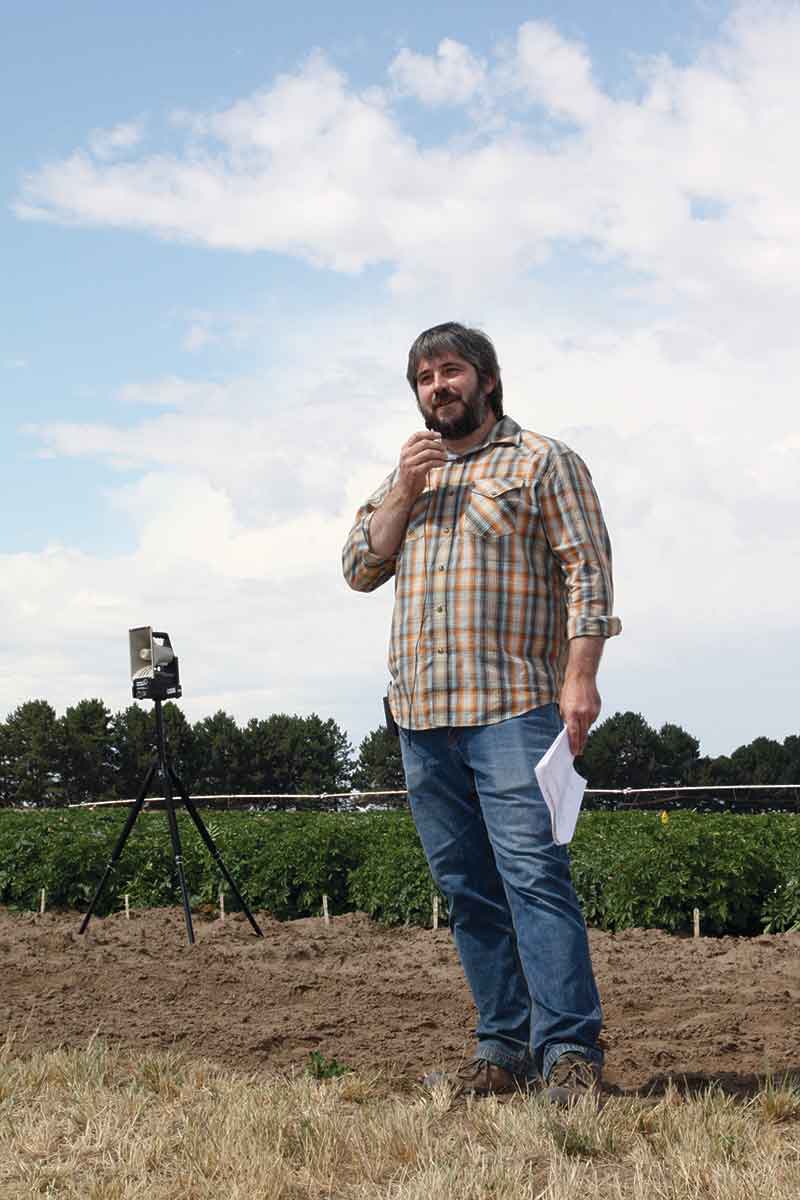Story and photos by Denise Keller, Editor
Support from the Columbia Basin potato industry helped secure funding for a project studying soil health, now underway at Oregon State University (OSU). The work is part of a multi-state research project and one of several soil health projects covered at the OSU Potato Field Day, held June 26 at OSU’s Hermiston Agricultural Research and Extension Center.

OSU entomologist Silvia Rondon updates field day attendees on leafhopper and Colorado potato beetle research.
Rotation, Organic Amendments
Amber Moore, a soil fertility specialist at OSU, reported on her work with a project studying the impact of crop rotation and manuring on soils. The multi-state project, designed to enhance soil health in U.S. potato production systems, is funded by a USDA Specialty Crop Research Initiative (SCRI) grant, which she said was secured largely as the result of stakeholder feedback.
The trial site in Hermiston, Oregon, represents the Columbia Basin of Oregon and Washington. In addition, other researchers are conducting the trial in Idaho, Colorado, Maine, Michigan, Minnesota, North Dakota and Wisconsin.
The project aims to enhance potato health, productivity and quality through management-based optimization of soil biological, chemical and physical characteristics. To do this, Moore is evaluating two-year and three-year potato cropping rotations in side-by-side fields with similar treatment regimes. The expectation is to see more soil health issues in the two-year rotation, Moore explained.
Moore is evaluating six treatments: Russet Burbank without fumigation, Russet Norkotah without fumigation, Russet Norkotah with Vapam, Russet Norkotah with fall-planted mustard, Russet Norkotah with dairy compost, and Russet Norkotah with mustard and dairy compost. Researchers at all eight sites are testing the first treatment, Russet Burbank without fumigation. Moore chose to use Russet Norkotah in the other treatments because it is a common variety grown in the region and it has a shorter season, allowing a mustard crop to follow. Norkotah also has susceptibility to Verticillium wilt.
The researchers will monitor Verticillium and nematodes in the soil, along with soil health parameters such as carbon dioxide respiration, active carbon, citrate and extractable nitrogen. They’ll also study soil fertility factors such as plant available nitrogen, phosphorus and potassium, as well as soil physical attributes such as wet aggregate stability and compaction. Lastly, researchers will evaluate tuber yield, size and quality.
This is the first year of the project. Vapam was applied in March to selected plots in the three-year rotation; in future years, the applications will be made in the fall. Potatoes were planted in mid-April, and soil was sampled for biological soil health, fertility and physical components in early April and late June. The field in a two-year rotation is in wheat this year.
Matthew Blua with the Washington State Potato Commission said that agricultural soils have long been studied from the perspective of chemistry and physics rather than biology. New tools to study soil biology are helping researchers understand how plants interact with microbes in the soil and the impact on crop production. He hopes to see this project result in techniques to reduce nematodes, Verticillium and other pathogens without fumigation, and also identify profitable rotation crops and increase knowledge of soil ecology.
Moore said she is excited about the possibility of finding similarities across the states in select soil and plant growth characteristics in response to varying degrees of fumigation and to the use of organic matter amendments.
Effects of Fumigants
Moore is collaborating on the SCRI project with OSU plant pathologist Ken Frost. In addition to that project, Frost is working on several other trials looking at soil health, explaining to field day attendees that he is primarily interested in how microbial communities respond to fumigant application. He’s looking at whether the application of 1,3-dichloropropene, chloropicrin and metam sodium changes the microbial community and affects overall plant health, yield and tuber quality.
“There’s a lot of interest in protecting soils as a resource for future generations, and no one wants to destroy what we have going for us,” he said.
Frost filled in his audience on results of previous experiments, in which he applied Telone (1,3-dichloropropene) at four rates: 11, 13, 15 and 20 gallons per acre. He sampled soil prior to fumigation and one month after fumigation and characterized the bacteria and fungi present.

Researchers at Oregon State University are working on several projects designed to improve soil health.
He found little difference in the soil microbial community among application rates, although bacterial richness and diversity increased in the 15 gallon per acre treatment. The pathologist also noted that bacteria of the Enterobacteriaceae family, which contains the soft rot bacteria, were in greater abundance in fumigated plots compared to control plots. Fungi in the Ophiocordycipitaceae family, which contains insect parasites, was negatively affected as a function of increasing the fumigant rate. Frost concluded that 1,3-dichloropropene fumigation could be a minor factor leading to the alteration of the microbial community structure in sandy loam soils.
Currently, Frost is in the first year of a four-year study evaluating chloropicrin and metam sodium. He’s comparing a three-year rotation with growing back-to-back potato crops. The latter involves fumigating every year “trying to do what we think we shouldn’t do to see how it changes the microbial community,” Frost explained. Soil samples taken pre-planting, at row closure and in the fall will be used to analyze bacteria and fungi as well as soil-borne pathogens such as Verticillium and nematodes. He’ll also evaluate tuber yield, size and quality.
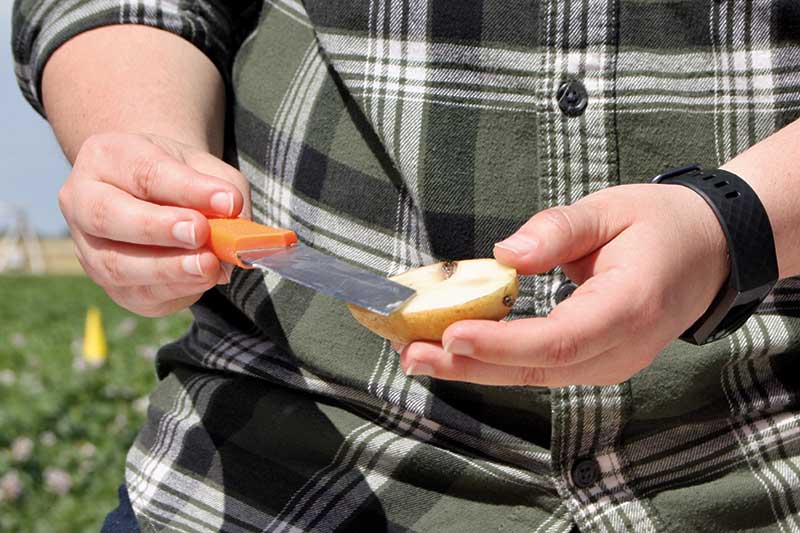
Jessie Brazil slices open tubers to show the type of damage caused by different species of soft rot bacteria.

